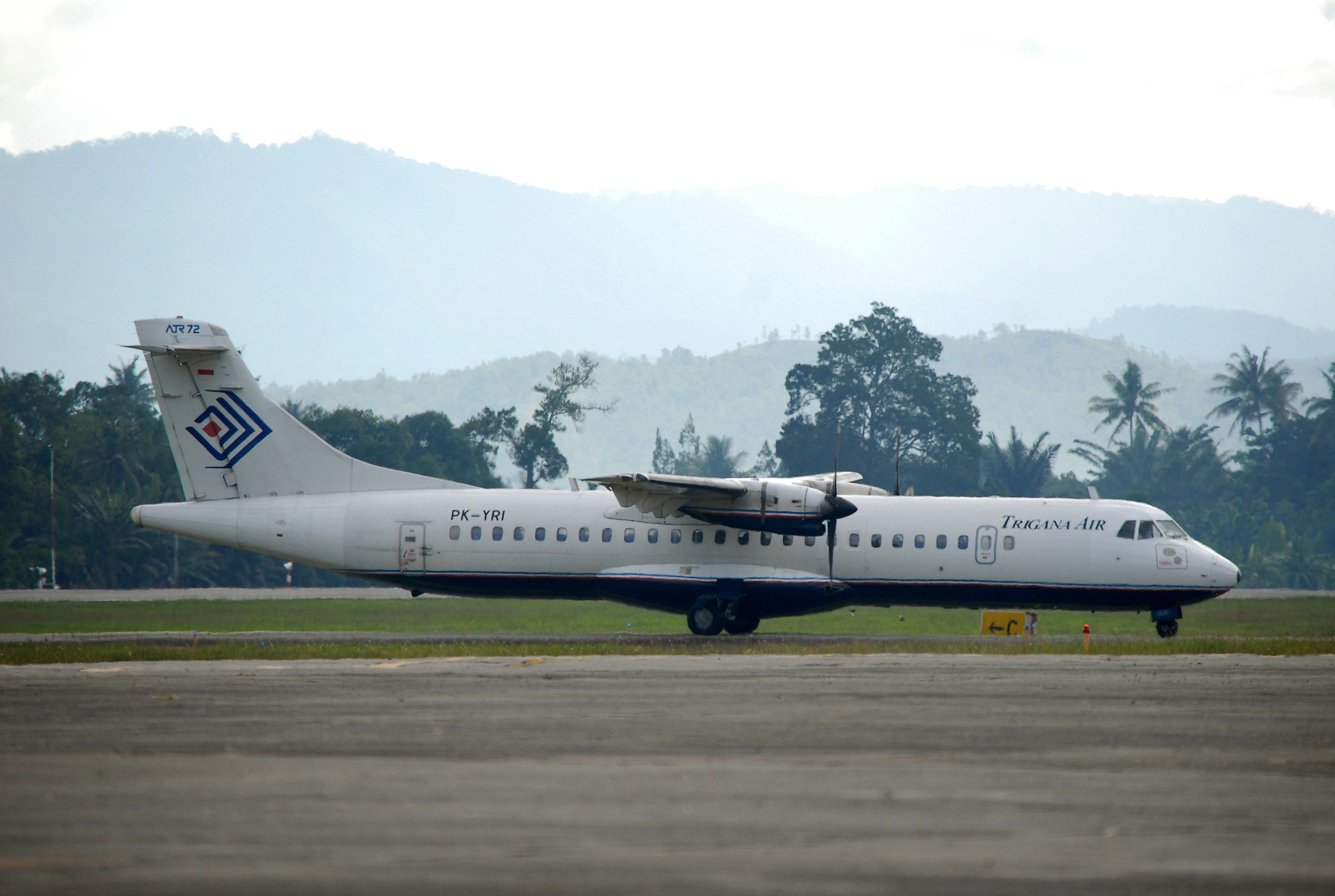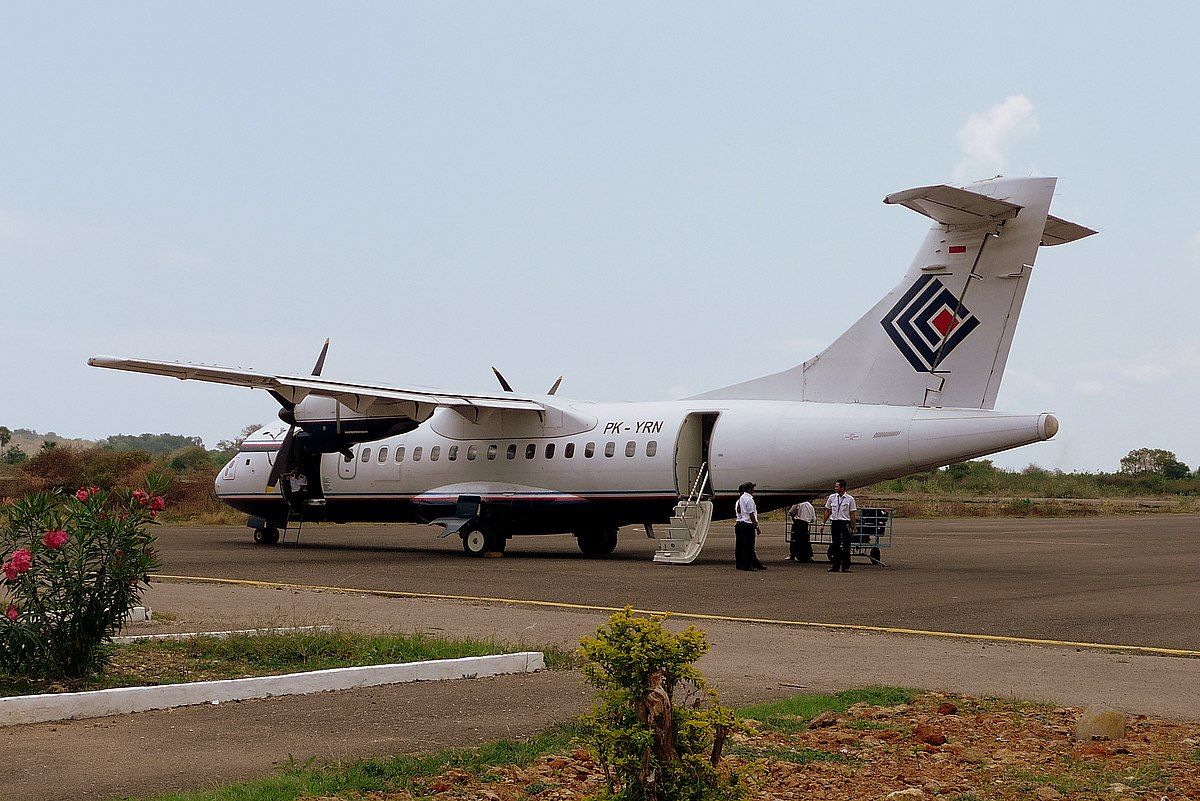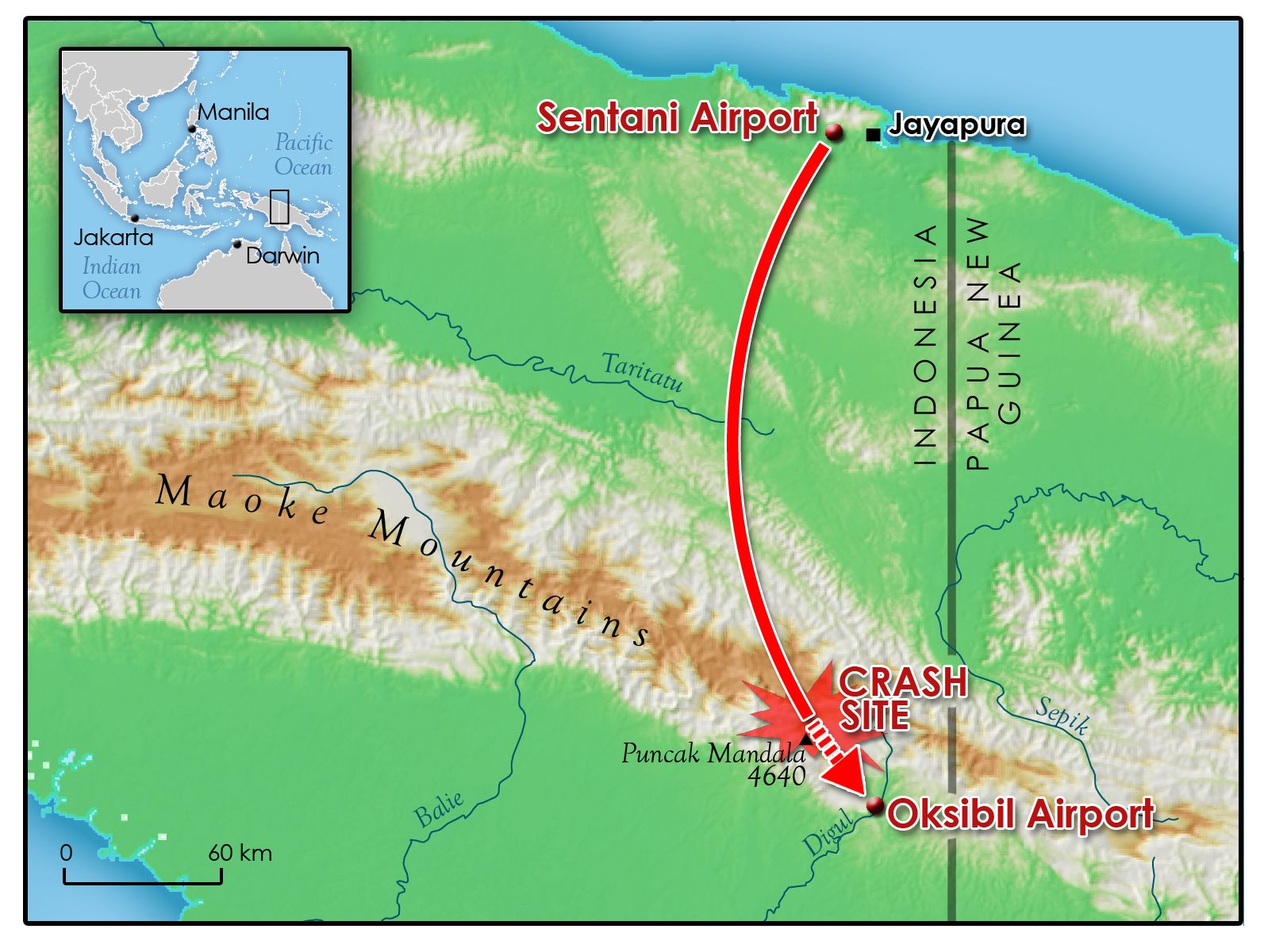The ATR 42 has a good safety record for a turboprop, but not as good as modern jets, of course. It has been involved in 53 accidents and experienced 37 hull losses (according to the Flight Safety Foundation). The worst of these was the crash of Trigana Air Flight 267 in the Indonesian province of Papua in August 2015. The crew deviated from the flight path and crashed into mountainous terrain.
Trigana Air Flight 267
Trigana Air Flight 267 was a domestic flight in the Indonesian province of Papua. It took off from Sentani Airport in Jayapura (the capital of the Papua province) and was designed for Oksibil to the south. Oksibil is a remote airport located very close to the Maoke mountain range, and near the border with Papua New Guinea.
It was operated by an ATR 42-300 aircraft, with registration PK-YRN. The aircraft had been with Trigana Air for around ten years. It was delivered new to the former US airline Trans States Airlines in 1998. It transferred to Trigana Air in 2005. Trigana Air still operates this type. Out of a total active fleet of 19 aircraft in early 2022, it operates five ATR 42 (four ATR 42-300 and one ATR 42-500 aircraft) and five ATR 72 aircraft (based on data from ch-aviation.com). It also operates the Boeing 737-300 and 737-500.
Crashing into the mountains
The flight took off at 14:22 local time on August 16th, for a flight of just over 40 minutes. No problems were reported before or during the flight, and no distress call was ever made. Controllers lost contact with the aircraft at 14:55. Search and rescue were dispatched soon after, but fog hampered search that day. Residents, however, reported seeing an aircraft hit the Tangok Mountain.
The wreckage was found the next day when the search resumed, with an aircraft and a ground team. The aircraft had crashed into the mountain, about 12 kilometers from its destination of Oksibil. All 49 passengers and five crew members onboard were killed.
The crash investigation
Initially, it was thought bad weather could be the cause of the crash. Stormy conditions are common in that area, and aircraft fly visually. Oksibil has no ILS available, and aircraft would fly and land under visual flight rules. However, weather reports and other aircraft confirmed that local conditions were good at the time of the crash.
Amazingly the flight data recorder was inoperative on the flight. Instead, the Indonesian National Transportation Safety Committee had to collect flight path data from ground sources and the cockpit voice recorder. It was determined that the crew intended to make a left base turn at 14:55 but instead diverted off the approach flight. By looking at previous flight data, investigators found that the same pilots had often made the same off-flight-path maneuver (including earlier the same day). While it has worked before, it did not on this occasion.
Cause of the crash
Exactly why the aircraft crashed was unclear. It was possible that the pilots experienced sudden fog accumulation - despite the generally good weather, localized cloud and fog are common in the Papua mountains.
Ultimately, the cause of the crash was established to be a controlled flight into terrain caused by the crew's decision to deviate from the standard flight path.
Another contributing factor was the failure of the EGPWS alarm system. This should sound when in close proximity to the ground, and it was clear from the cockpit voice recorder that it did not. The circuit breaker for the system had been removed, reportedly not an uncommon situation, as pilots often did this when flying in the mountains to prevent unnecessary warnings.
This was a terrible accident, likely caused by the over-confidence of the pilots. Flights in this part of Indonesia are inherently difficult, with mountainous terrain, changeable weather and visual flight rules. Let us know if you have ever flown in the region.



